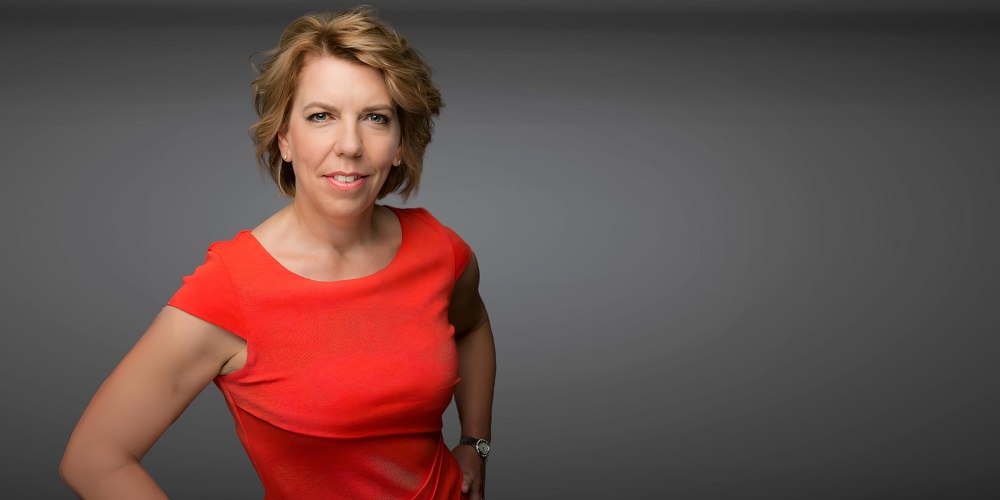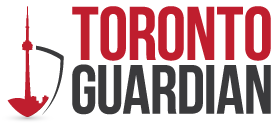SanoLiving pairs AI algorithms and experienced menopause clinicians to deliver personalized, evidence-based care that is on a mission to empower women to easily manage their menopause symptoms. We spoke with Angela Johnson, CEO and Co-Founder, to learn more about them.

What is your business called and what does it do?
SanoLiving is Canada’s only women’s midlife digital health platform, available nationwide in French and English. Designed to bridge the long-overlooked gaps in women’s healthcare. SanoLiving doesn’t just empower women; it helps them access their inner strength to navigate midlife transitions and focus on their whole body, mind, and soul. Through a combination of expert coaches, clinicians, and AI, SanoLiving delivers accessible, personalized care. This includes guiding women through mammograms, bone density testing, and other public healthcare services, managing sleep, diet, exercise, and mental health, prescribing safe and effective treatments, and providing therapies for pelvic floor and sexual health, all while offering comprehensive education.
What made you want to do this work?
SanoLiving was inspired by my own experience with crippling perimenopausal and postmenopausal symptoms, but the inequity of unmet health needs of midlife women also drives me. In Canada, there are over 6.5 million Canadians without a family doctor. And those who do have a family doctor find that those they expect to rely on do not have the expertise, training or even the knowledge to identify that the symptoms they are experiencing are menopausal, nor how to manage those symptoms effectively.
Perimenopause and menopause hit us when we are in our peak earning years, and many women are having to take a step back from their careers when they should be saving for their retirement and enabling themselves to live the life they have envisioned and designed for themselves. Given that 50% of the workplace is made up of women, a large percentage of these women’s time at work will be in some stage of the menopause journey. And yet, workplace benefits remain male-centric and fail to reflect women’s midlife needs.
Through SanoLiving, I am committed to addressing healthcare inequities, ensuring that women not only navigate but thrive during their peak earning years by giving them access to quality midlife and menopause care.
What problem did you want to solve through your business?
Diversity, equity, and inclusion have been at the forefront of most employers’ initiatives for over five years. More recently, Canadian employers are starting to recognize that women have unique health needs. However, what meaningful support looks like is still unclear to many.
While some employers are exploring workplace policies, accommodations, and cultural adjustments—such as creating dedicated spaces or offering additional time off—there is a growing realization that this is only part of the solution.
For many women, work is not just about earning a living; it’s about excelling and growing. When their well-being is compromised, so is their productivity and sense of belonging. It is well documented that 1 in 10 women leave the workplace due to unmanaged symptoms, and the Menopause Foundation of Canada report calculates the Canadian economic cost at $3.5B.
Even more unsettling is that these numbers don’t capture the cost of replacing these women nor the loss of their valuable expertise and skills in the workplace.
Women don’t want accommodations and policies; they want solutions. They want treatment options to manage those symptoms so that they can continue to thrive in the careers they have worked so hard to achieve. SanoLiving and our premiere product, SanoMidLife are the solution.
We are solving healthcare inequities in Canada, ensuring that women have access to quality midlife and menopause care.
Over 50% of UK employers have already done this by including expert menopause care within their employee benefits plan. It’s time for Canada to step up, and we’re here to offer that solution.
Who is your main clientele/demographics?
SanoLiving has a B2B and D2C business model. Our clientele includes both insurers and employers, as well as any woman or individual born with a female reproductive system over the age of 18. They can contact us directly if they do not have SanoMidLife within their employer benefit plan. We are in every province in Canada and support both French and English languages.
How does your business make money?
SanoLiving operates with a dual-revenue income model with B2B and D2C offerings.
First, we partner with insurers and employers to seamlessly integrate our platform into their employee benefits programs and disability claims interventions. This ensures that we are helping to retain talented women by providing timely, personalized care, experienced menopause clinicians, and effective treatment plans. With this support, women can better manage symptoms and thrive in their roles at work and in life. We also offer a monthly subscription or an annual subscription to SanoMidLife. In our commitment to accessibility, we have tried to keep the cost within reach for most – and have a monthly subscription option that is less than a massage or the cost of a night out for dinner.
How has your business grown over the years?
SanoLiving launched in late 2023, and by April 2024, we had signed with our first larger Canadian insurer, Medavie Blue Cross. Plan members and their dependents across the country now have access to SanoMidLife. This summer, we opened the doors to our D2C channel, welcoming women anywhere in Canada, insured or not, to access quality menopause care for as low as $84 CAD a month. This ensures that every woman can have access to SanoMidLife
services, regardless of where she lives or if she has insurance. In October, we were thrilled to announce that ŌURA, maker of the most trusted smart ring, named SanoLiving as its partner in Canada for midlife and menopause healthcare solutions.
Where in the city are you located?
SanoLiving is based out of Richmond Hill, Ontario, Canada and operates across all of Canada.
What is the best question a prospective customer could ask a member of your profession when comparing services? Give the answer as well.
There seem to be many companies claiming to offer solutions for menopause symptoms – how is SanoLiving different?
SanoLiving is different from competition in many ways. First, quality menopause care is more than just prescriptions. Women deserve more than a one-size-fits-all approach. We take a compassionate, holistic approach to midlife and menopause care. We’re not only helping women with prescriptions for HRT and supplements to sleep better, but we’re also helping women navigate all aspects of their midlife journey, from booking mammograms and bone density tests to managing diet, exercise, mental health, and accessing safe, effective treatments. We also offer therapies for pelvic floor and sexual health.
This is done through AI-powered telemedicine, expert coaching and personalized support. Our health coaches are menopause-trained nurses and social workers, and our clinicians are trained nurse practitioners and naturopathic doctors. Every woman has the same health coach and clinician throughout the year, and during that year, they meet with their health coach approximately six times and three times with their clinician. Their health team helps them implement their care plan, helping them be accountable, making adjustments when needed, and providing the compassion and support they may be missing in their traditional healthcare.
Finally, SanoLiving is leveraging AI in a way that no other healthcare provider is. We’re very excited to have launched Sano, your new menopause bestie. Sano is an AI-powered virtual health assistant. Think ChatGPT, but it is for menopause. Women anywhere can ask their menopause questions via text or voice for judgment-free answers. No subscription to SanoMidLife is required to access Sano.
Sano talks to you like an empathic, knowledgeable, compassionate clinician but uses plain language so that even the most complicated health topics are easily understood. Imagine asking the most intimate sexual health or bladder control questions in the privacy of your own home with no discomfort or awkwardness. Women can speak with Sano without providing any personally identifiable information – retaining our clients’ privacy is very important to us.
Sano does not only pull information from the internet. It has its own digital library which our coaches, clinicians and data scientists have spent the past year training and curating.
What is the best and the worst part about what you do?
The best part of my job is helping women improve their health and thrive as they navigate midlife. Women of this generation have the gift of longevity. I am passionate about helping them make the most of it, living vibrantly and healthy into their 60s, 70s, 80s, and beyond.
It’s incredibly fulfilling to see women’s symptoms improve and to know that we’re setting them up for long-term success. By supporting their health today, we empower them to continue their careers and excel during their peak earning years, bridging the financial security gap for countless women. Our goal at SanoLiving is to ensure they can enjoy these years without being weighed down by chronic illness, so they can fully embrace the lives they’ve envisioned for themselves.
The most challenging part of my job is witnessing how slowly change is happening in Canada’s workplace benefits system. Despite progress in other areas, the system remains largely patriarchal, focused on single healthcare transactions—like prescriptions or physiotherapy—rather than the comprehensive, holistic support that women’s midlife health requires.
Compared to the UK, where over 50% of organizations have integrated menopause care into their benefits, Canadian employers are falling short. I worry that if we stop at policies and accommodations without providing real healthcare solutions, we risk unintended consequences.
Management may start to think, “We accommodate her during her reproductive years, and now we accommodate her for 15+ years in menopause—why am I hiring women?” This mindset undermines the significant strides women have made in the workplace.
What gives me hope is that some Canadian employers and insurers are starting to recognize this gap and looking to go beyond basic accommodations. They’re beginning to understand the need for real, supportive healthcare, by including expert menopause care in their benefit plans.
But change needs to happen faster if we’re to create a workplace where women’s health, careers, and contributions are truly valued.
What is your favourite joke about your own profession?
Why did the Femtech CEO bring a hormone tracker to the board meeting?
Because she’s monitoring cycles of innovation, balancing the mood of the room, and making sure the competition’s hot flashes don’t stand a chance!
Where can we follow you?
Company | Premiere Product | Instagram | Facebook | LinkedIn
PAY IT FORWARD: What is another local business that you love?




